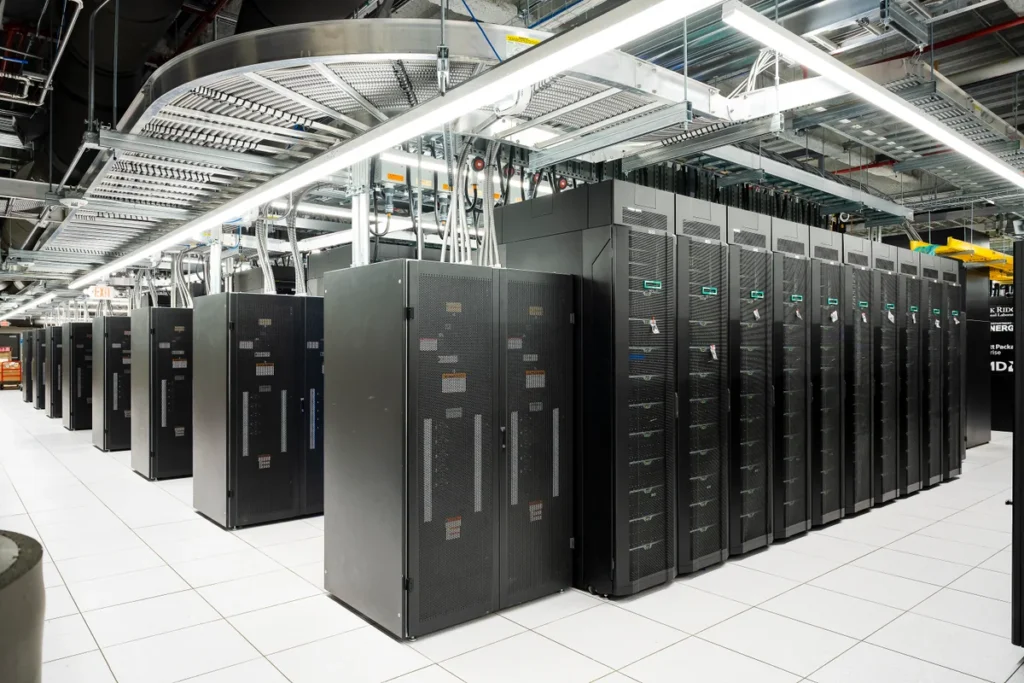Supercomputers are a kind of very powerful computers that can execute complex calculations at much faster speeds than those of regular computers. They are employed in many scientific and engineering applications where speed and processing power are essential, such as nuclear simulations and climate modeling.
What Supercomputers actually do?
Supercomputers are extremely sophisticated computing devices that have a trillion calculations per second processing speed. Because they are usually made up of thousands of interconnected processors operating in parallel, they can handle extremely difficult problems far more quickly than conventional computers. Large buildings with sophisticated cooling systems are frequently home to these devices in order to control the enormous heat they produce.
The necessity to tackle problems requiring real-time processing of massive volumes of data is what drives the development of supercomputers. Supercomputers’ power and capacities keep increasing as technology develops, opening up new avenues for research and development breakthroughs across a range of disciplines.

History about Supercomputers
In the 1950s, supercomputers—powerful computing devices—came into existence. Many people believe that the CDC 6600, created by Seymour Cray in the 1960s, was the first supercomputer. Later models adopted parallel processing, while earlier machines prioritized raw speed. Supercomputers are becoming indispensable in sectors such as drug discovery, artificial intelligence, and climate modeling, as they push the boundaries of computing with every new development.
What is the difference between basic computer and Supercomputer?
A basic computer, like a desktop or laptop, is made for doing everyday chores like using office software, playing games, and accessing the internet. Due to their constrained CPU and memory capacities, these computers are best suited for routine activities rather than intensive computing workloads.
Supercomputers, on the other hand, are made for extremely specific tasks requiring massive amounts of processing power. A supercomputer can process trillions or even quadrillions of calculations per second, whereas a conventional computer can only do millions of calculations per second. Supercomputers differ from regular computers in terms of processing power, parallelism, and capacity to manage large-scale problems.
List 5 examples Of Supercomputer
Currently ranked among the world’s most potent supercomputers, Fugaku was developed by RIKEN and Fujitsu in Japan and is capable of over 442 petaflops (quadrillions of computations per second).
Summit is a 200 petaflop computer that IBM built for the US Department of Energy. It is used for scientific simulations and climate research, among other things.
Sierra is a computer program developed by IBM that is utilized for simulating nuclear bombs by the Lawrence Livermore National Laboratory. Its maximum speed is 125 petaflops.
From 2016 to 2018, Sunway TaihuLight, a Chinese supercomputer with a peak performance of 125 petaflops, held the title of fastest supercomputer in the world.
One of Europe’s most potent supercomputers, LUMI is housed in Finland and is dedicated to research and development in areas like quantum computing and artificial intelligence.
Functions of Supercomputer
Supercomputers are crucial to the field of computational science because they can be used for a variety of computationally demanding tasks in different domains, such as molecular modeling which involves computing the structures and properties of chemical compounds, biological macromolecules, polymers, and crystals, weather forecasting, oil and gas exploration, and quantum mechanics
Supercomputers are perfect for complicated simulations and data processing since they can process billions of computations per second.
Supercomputers speed up research processes, resulting in ground-breaking breakthroughs in anything from medicine development to climate modeling.
They can solve issues that were previously unsolvable, creating opportunities for new innovations and approaches.
for more related information:SuperComputers
How to use Supercomputer?
Supercomputers are not meant for home usage, in contrast to personal computers. They usually reside in specialized data centers and need a high level of skill to run. Supercomputers are often accessible to scientists, academics, and organizations working on large-scale computationally demanding projects.
Certain cloud systems provide supercomputing capability as a service, hence increasing accessibility for researchers and enterprises.
collaborating with organizations that own supercomputers can offer chances to use their resources for particular initiatives.
